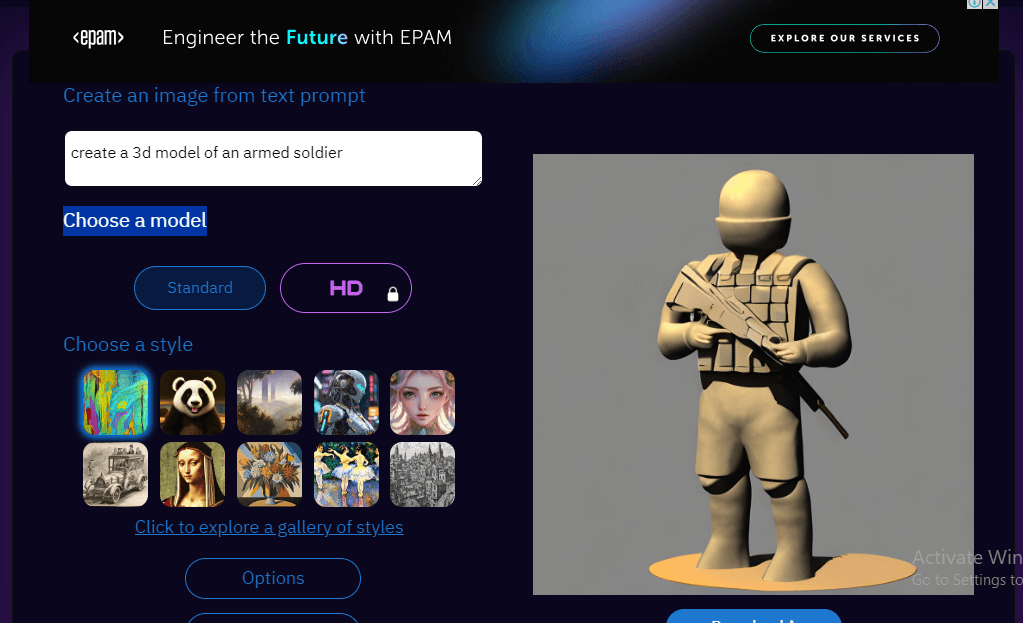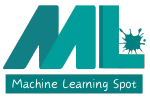Let’s talk about Best Text-to-3D AI models In recent years, the field of artificial intelligence has witnessed remarkable advancements, especially in the realm of 3D modeling. Text-to-3D AI models have emerged as a powerful tool, enabling users to convert textual descriptions into intricate three-dimensional representations.
This article delves into the intricacies of eight prominent models that have garnered attention for their innovation and effectiveness.
Let’s dive into the world of 3D digital creativity!
Our Top Pics of Text-to-3D AI Models
| Tools | Best for | Free Trial | Starting Price |
| 3DFY AI | Gaming & Architecture | The free Version is Available | $20 / month |
| Spline | Collaboration & Team Projects | The basic plan is FREE | $9 / month |
| Sloyd AI | Great Customization | Basic plan is FREE | $15 / month |
| Meschapade | E-commerce Ready Models & Avatars | Free Trial is Available | €600 / year |
| Rodin Diffusion | The basic plan is FREE | Not Mentioned | Not Mentioned |
| Luma AI | Realistic 3D images | Free for iOS devices | $1 / API Capture |
| Deep AI | Easy Interface | Free Version is Available | $4.99 / month |
| Deep Motion | Full Body Marker Tracking | Free Version is Available | $9 / month |
3DFY AI: Best Text-to-3D AI Model for Realistic Texture Mapping
3DFY AI stands out for its ability to transform plain text into visually stunning 3D models. This model employs advanced deep learning techniques, leveraging convolutional neural networks (CNNs) and recurrent neural networks (RNNs) to interpret and generate detailed 3D structures.
Here, you can see that I’ve created ‘a shiny silver pirate cutlass’ using 3DFY AI model. It’s super amazing.
The core features of 3DFY include:
- Semantic Understanding: 3DFY AI excels in understanding the semantics of textual descriptions, allowing it to capture nuanced details in the generated 3D models.
- Realistic Texture Mapping: The model incorporates sophisticated algorithms for realistic texture mapping, enhancing the visual fidelity of the output.
- Scalability: 3DFY AI can handle a wide range of input complexities, making it suitable for diverse applications.
Spline: Best Text-to-3D AI Model for Smooth and Detailed Contours
Spline adopts a unique approach by combining text-to-3D conversion with spline-based modeling. This model stands out for its emphasis on creating smooth and continuous surfaces. Key features of Spline include:
- Spline-Based Representation: Spline leverages spline curves to generate 3D shapes, ensuring smooth transitions and detailed contours.
- Parametric Control: Users can exert fine-grained control over the generated models through intuitive parametric adjustments.
- Adaptive Detailing: Spline excels in adapting to textual descriptions with varying levels of detail.
Sloyd AI: Best Text-to-3D AI Model for Smooth and Detailed Contours
Sloyd AI sets itself apart with a focus on interpretability and user interaction. This model employs attention mechanisms and interactive interfaces to enhance the user experience.
I’ve used the Sloyd AI model to create a digital drone and it can be moved anywhere I want.
Core features of Sloyd AI include:
- Attention Mechanisms: Sloyd AI utilizes attention mechanisms to prioritize certain parts of the input text, improving the accuracy of 3D model generation.
- Interactive Feedback: Users can provide feedback during the generation process, influencing the final output and refining the model’s understanding.
- Multi-Modal Inputs: Sloyd AI supports multi-modal inputs, allowing users to combine textual descriptions with other forms of input data.
Meschapade: Best Text-to-3D AI Model for Artistic Style Transfer
Meschapade focuses on generating 3D models with a stylized and artistic flair. This model incorporates style transfer techniques and expressive modeling for unique outputs. Key features include:
- Style Transfer: Meschapade integrates style transfer algorithms, enabling users to specify artistic styles for the generated 3D models.
- Expressive Modeling: The model emphasizes capturing expressive and artistic elements, making it suitable for creative applications.
- Customizable Aesthetics: Users can tweak parameters to customize the aesthetics of the generated models.
Rodin Diffusion: Best Text-to-3D AI Model for Detailed Diffusion-Based Structures
Rodin Diffusion powered by Microsoft, distinguishes itself through its diffusion-based approach, which involves simulating the diffusion process to create intricate and detailed 3D structures. The main aspect of this model is that it creates 360° Avatars from scratch.
You can see how different prompts show different 3D sculptures, whethere it’s ‘a beared man with curly hair posing in a black jacket’ or ‘a woman with afro hairstyle wearing red’.
Key features of Rodin Diffusion include:
- Diffusion Simulation: The model simulates the diffusion process to generate complex and realistic structures.
- Fine Detailing: Rodin Diffusion excels in capturing fine details in 3D models, making it suitable for applications that demand precision.
- Physics-Informed Generation: The diffusion-based approach incorporates physics-informed principles, enhancing the realism of the output.
Luma AI: Best Text-to-3D AI Model for Advanced Lighting and Shading
Luma AI combines text-to-3D conversion with advanced lighting and shading techniques, aiming to produce visually striking and well-lit models. Core features of Luma AI include:
- Advanced Lighting: Luma AI incorporates advanced lighting algorithms to enhance the visual appeal of the generated 3D models.
- Shading Optimization: The model optimizes shading techniques to create realistic shadows and highlights, adding depth to the output.
- Photorealistic Rendering: Luma AI focuses on achieving photorealistic rendering for a visually immersive experience.
Deep AI: Best Text-to-3D AI Model for Comprehensive Detail and Adaptability
Deep AI is a versatile text-to-3D model that leverages deep neural networks to generate detailed and realistic 3D structures.

Here, I’ve created an ‘armed soldier’ using Deep AI.
Core features of Deep AI include:
- End-to-end Training: Deep AI employs end-to-end training, allowing the model to learn complex relationships between textual descriptions and 3D shapes.
- Multi-Scale Representation: The model utilizes multi-scale representations to capture both global and local features, ensuring detailed outputs.
- Adaptability: Deep AI demonstrates adaptability to diverse input styles and complexities.
Deep Motion: Best Text-to-3D AI Model for Dynamic Motion and Animation
Deep Motion takes text-to-3D modeling a step further by incorporating dynamic motion into the generated models. This model excels in creating animated 3D structures based on textual descriptions. Key features include:
- Dynamic Motion Generation: Deep Motion focuses on generating 3D models with dynamic and realistic motion, adding an extra layer of complexity.
- Temporal Understanding: The model incorporates temporal understanding to ensure smooth and coherent motion sequences.
- Customizable Animation: Users can customize the animation style and parameters to achieve desired motion effects.
Conclusion
These best text-to-3D AI models have transformed the landscape of 3D content creation, offering a diverse range of capabilities from realistic rendering to stylized artistic expression and dynamic motion.
In this blog, I tried my best to bring you the Best Text-to-3D AI Model list which I am sure may have helped you please read my other blogs on AI tools and if you have any queries or suggestions, you can contact me here.


